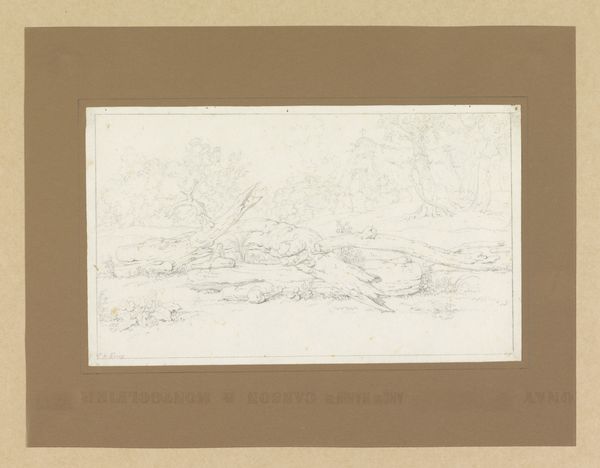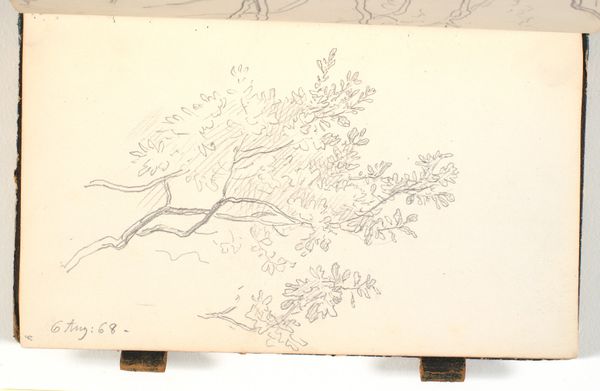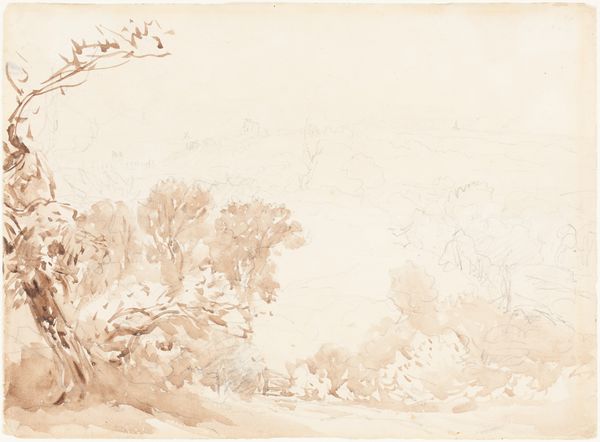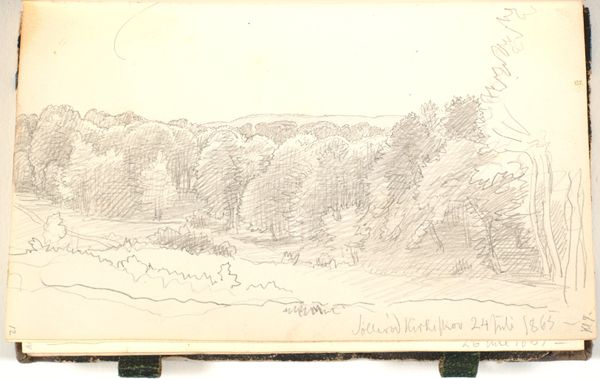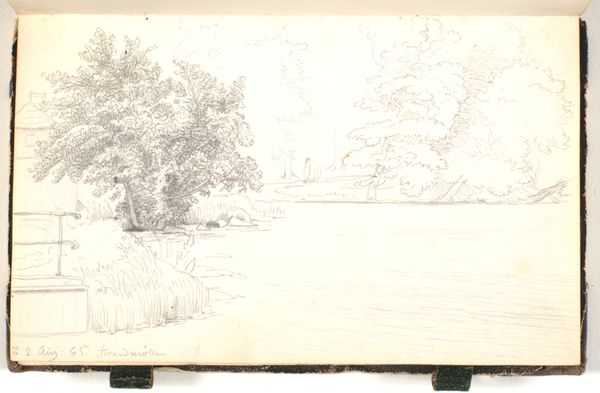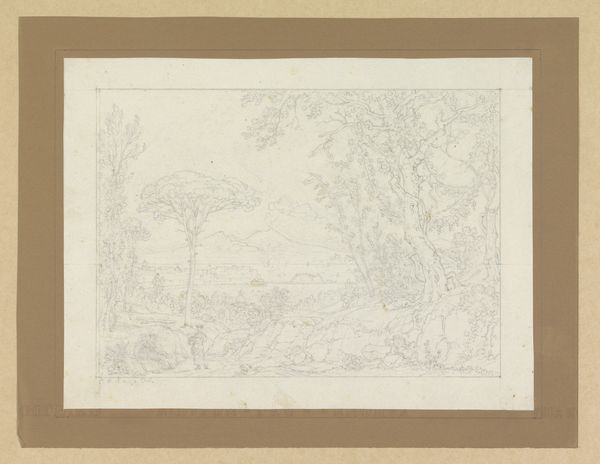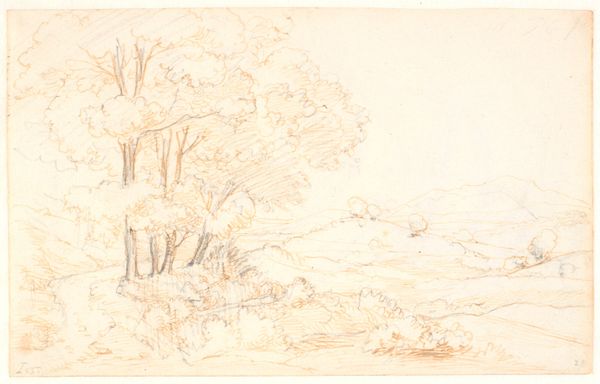
Dimensions: 163 mm (height) x 100 mm (width) (bladmaal)
Editor: Here we have "Skovtykning (skovbryn). En gren," or "Thicket (wood's edge). A branch" by P.C. Skovgaard, created in 1865 using pencil. I'm immediately struck by the contrast between the detailed thicket on the left and the very faint, almost ghost-like tree on the right. What do you make of this piece? Curator: It’s fascinating to consider this sketch in terms of Skovgaard's artistic process and the materiality of its production. We see the artist wrestling with representation, the dense application of graphite on the left suggesting sustained engagement, in contrast to the light, almost ephemeral, marks on the right. Editor: So you're focusing on how the artist physically worked with the pencil and paper? Curator: Precisely. Consider the availability and quality of paper and pencils in 1865. This wasn't a mass-produced, disposable sketch in our modern sense, but rather a considered study. The act of repeatedly applying the graphite to build up the image of the thicket becomes a form of labor itself, documenting the artist's interaction with, and perhaps even his physical exertion in rendering, the landscape. What does that repeated action suggest to you? Editor: Hmm, I suppose it highlights the effort and time spent studying the specific texture and density of the forest. Was that level of detail unusual for landscape sketches at the time? Curator: The Romantic period often emphasized the sublime and emotional response to nature, but Skovgaard here provides us with evidence of a slower, more deliberate investigation. It invites us to ponder the role of art academies at that time. Do you think this might have been part of an academic study? Editor: I hadn't considered that. So rather than just the finished image, we should also be considering what this drawing reveals about artistic training and the cultural value placed on careful observation and craftsmanship? Curator: Exactly! The very act of drawing with pencil on paper, readily available, cheap, and non-toxic materials at that time, became a democratizing factor, enabling even early career artists to capture images for study, which previously required a very expensive undertaking for other medium practices like painting or printing. The work is not just about what it depicts but also about *how* it was made, and how that "how" speaks to a broader understanding of art production and labor in the mid-19th century. Editor: I'm beginning to see this less as just a landscape sketch, and more as a record of a very specific moment in art history! Thank you for pointing that out.
Comments
No comments
Be the first to comment and join the conversation on the ultimate creative platform.





